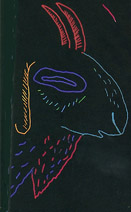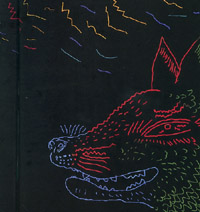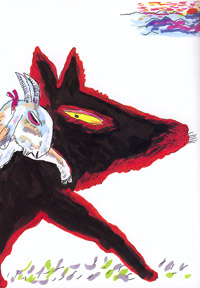Book Review: One Stormy Night, One Sunny Day
|

|
| Reading Level |
|
Ages 4-8 |
|
Share This Page
|
|
|
|
|
|
|
Follow This Site

|
 |
|
|
|

|
These two books are listed as a book and its sequel, but they are more like companion books, telling two parts of the same story, just as the two main characters tell a larger story through their words and actions. The author, Yuichi Kimura, has written more than 300 books, some of which have been used in children's movies. The illustrator, Hiroshi Abe, shows his animals so realistically in part because he used to work in a zoo. Both do a wonderful job of presenting situations and characters that are unforgettable.

 A very unlikely companionship emerges from the common shelter-seeking of a hungry wolf and a hungry billy goat. Time and again, the two characters are on the brink of discovering just how much their natural instincts will collide, only to choose politeness over rudeness. In this way, the wolf and the goat transcend traditional roles and relationships and achieve a larger truth.
A very unlikely companionship emerges from the common shelter-seeking of a hungry wolf and a hungry billy goat. Time and again, the two characters are on the brink of discovering just how much their natural instincts will collide, only to choose politeness over rudeness. In this way, the wolf and the goat transcend traditional roles and relationships and achieve a larger truth.
They have a few opportunities to discover the truth: lightning flashes illuminate the hut, each suspects the truth by the tenor of the other's voice; but the goodness of a shared time together overcomes all ... until
 The second book opens a new chapter in the lives of these two friends, and they are tested even more in their second adventure together. The wisdom of the author shines through, however, in that it is the reader's expectations who are tested most of all. In two distinct instances in this second book, the reader is left to assume something that might or might not have happened. The reader has to balance natural instincts and what he or she knows about the way of life in the wild with the way the wolf and the goat have been treating each other in these two stories. Will the wolf finally eat the goat? Turn the page and find out, but make up your mind before you turn the page. Finding out what the author has in store and how it might or might not match your suspicions is enlightening.
The second book opens a new chapter in the lives of these two friends, and they are tested even more in their second adventure together. The wisdom of the author shines through, however, in that it is the reader's expectations who are tested most of all. In two distinct instances in this second book, the reader is left to assume something that might or might not have happened. The reader has to balance natural instincts and what he or she knows about the way of life in the wild with the way the wolf and the goat have been treating each other in these two stories. Will the wolf finally eat the goat? Turn the page and find out, but make up your mind before you turn the page. Finding out what the author has in store and how it might or might not match your suspicions is enlightening.
The design style of these books is interesting as well. The action in the first book takes place at night, so the backgrounds on most of the pages is pitch black, just like the sky (and the interior of the hut in which where the wolf and goat are hiding from the storm). The exceptions to this are when a lightning strike illimunates the hut and when the storm has blown over. In the second book, the action all takes place during the day and so the background colors on the pages are brighter, like whites and oranges and greens. When the two characters nap, the background fades to black. (This is also one of the dark times, when the wolf is again considering which is more important—his hunger or his new "friend." Indeed, this seems to be the theme for the backgrounds throughout: When the "friendship" is in doubt, the background is dark; when the two are acting and thinking friendly, the background is light.)
These books do a wonderful job of turning expectations on their heads. If a wolf and a goat can remain friends through trying circumstances, then what about people of different races, religions, countries, etc.? That is what the author and the illustrator are asking. What's your answer?